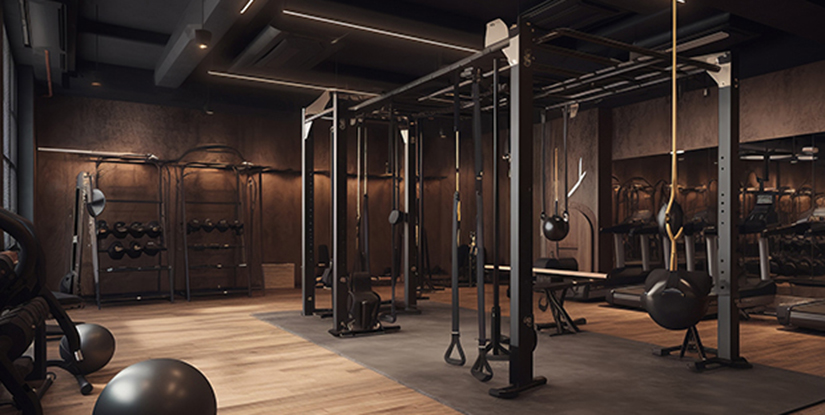Exercise and Fitness Equipment Guide | Selection, Safety & Maintenance

Introduction to Exercise and Fitness Equipment
Selecting the right exercise and fitness equipment is a critical step for achieving measurable results, reducing injury risk, and ensuring long-term adherence to a training program. This guide outlines the principal categories of equipment, selection criteria for home and commercial settings, maintenance best practices, and safety considerations to help fitness professionals and consumers make informed decisions.
Key Categories of Fitness Equipment
- Cardiovascular Machines: treadmills, stationary bikes, ellipticals, rowing machines—designed to improve aerobic capacity and caloric expenditure.
- Strength Training Equipment: free weights (dumbbells, barbells), selectorized machines, plate-loaded systems, kettlebells, and resistance bands for progressive overload.
- Functional Training Tools: TRX suspension trainers, medicine balls, plyometric boxes, sleds, and battle ropes for movement-based conditioning.
- Recovery and Mobility Tools: foam rollers, percussion devices, stretching straps, and massage tables to support performance and reduce downtime.
- Wearables and Connected Devices: heart-rate monitors, smartwatches, and app-connected equipment that enable tracking and program integration.
Choosing Equipment: Goals, Space, and Budget
Start by defining training goals—cardio endurance, hypertrophy, strength, or functional movement. Map those goals to equipment types and assess available space. Key considerations include footprint, ceiling height, and flooring. For limited spaces, prioritize versatile items such as adjustable dumbbells, a foldable bench, and a compact cardio machine. For commercial facilities, durability, warranty, and maintenance ease should outweigh initial lower-cost options.
Performance and Quality Indicators
When evaluating equipment, examine build quality (steel gauge, welds, frame thickness), smoothness of motion (bearings, pulleys), adjustability ranges, and ergonomics. Test product specifications against real-world use: maximum user weight, resistance increments, warranty terms, and parts availability. Certifications and compliance with industry standards are additional assurance in commercial contexts.
Safety, Installation, and Maintenance
Proper installation minimizes liability and optimizes longevity. Anchor heavy equipment where required, ensure adequate clearance, and verify electrical specifications for powered units. Implement a routine maintenance schedule: clean surfaces, lubricate moving parts, inspect cables and fasteners, and replace consumables. Log maintenance activities to extend service life and preserve warranty coverage.
Programming and Integration
Equipment selection should support programming needs. For progressive strength programs, ensure incremental resistance options and accessory compatibility. Cardio machines with interval programming and connectivity can enhance adherence. Integration with training apps and facility management software streamlines member experience and data tracking for coaches.
Cost-Benefit and Procurement Strategies
Balance upfront cost against expected lifecycle and utilization. In commercial settings, total cost of ownership includes maintenance, downtime, and parts. Consider leasing or phased procurement to align capital expenditure with revenue. For home users, prioritize multifunctional pieces that deliver the greatest training variety per square foot.
Trends and Innovations
Emerging trends include hybrid machines that combine cardio and strength modalities, increased connectivity for remote coaching, and materials that improve durability while reducing weight. Sustainability is also influencing procurement decisions, with recycled materials and energy-efficient components gaining traction.
Conclusion
Choosing the right exercise and fitness equipment is a strategic process that balances goals, space, budget, and long-term maintenance. Prioritize quality, safety, and programmability to maximize outcomes. Whether equipping a home gym or a commercial facility, informed decisions reduce costs, improve user experience, and support consistent progress.
FAQs
- What equipment is essential for a basic home gym? — Adjustable dumbbells, a stable bench, a pull-up bar, and a cardio option (bike or treadmill).
- How often should gym equipment be serviced? — Inspect weekly; perform preventive maintenance monthly and deeper service quarterly.
- Are commercial machines worth the extra cost? — Yes, for heavy use they offer greater durability, warranty, and service support.
- How do I choose between free weights and machines? — Free weights for functional strength; machines for isolation and safer progression.
- What safety checks should I perform before using equipment? — Verify stability, check for frayed cables, confirm clearances, and test moving parts.
- Can I mix high-tech equipment with traditional gear? — Absolutely; integrate wearables and apps for tracking while using proven mechanical tools.
- How much space is needed for a compact home setup? — A multiuse area of 6x8 feet accommodates key equipment safely.
- Is used equipment a good option? — Good if inspected for wear; prioritize structural integrity and parts availability.
- What is the best way to budget equipment purchases? — Prioritize core items, phase buys, and factor maintenance into total cost of ownership.

